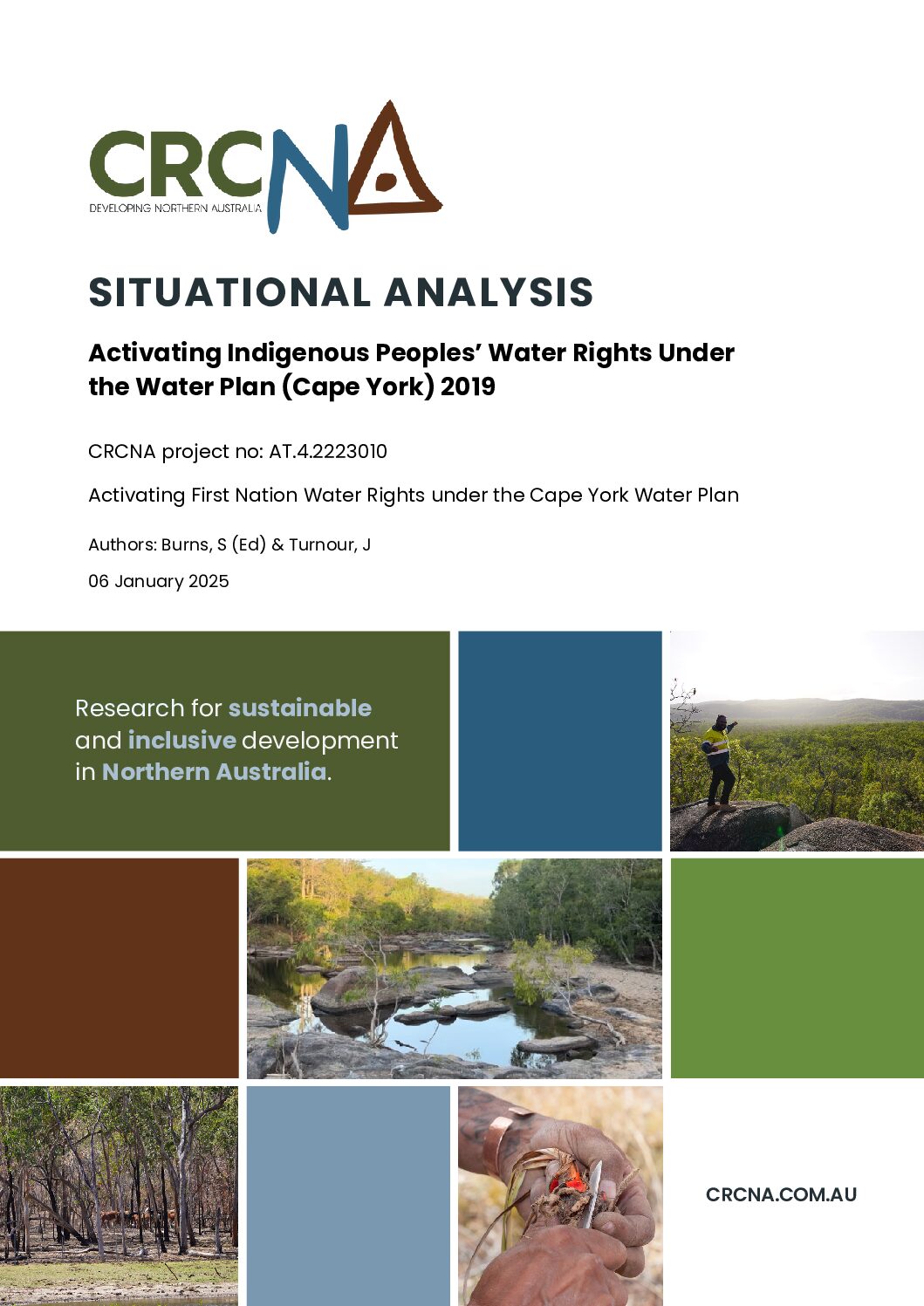
- Reference # AT.4.2223010
- Project Status Current
- Timeframe 3 years: 2023 to June 2026
- Project manager Anthony Curro
- CRCNA Funding $500,000
- Total project value $1,088,499
- Project research participant Cape York Land Council ; Balkanu Cape York Development Corporation ; NAILSMA ; Cairns Institute, JCU ; Water Trust Australia ; Qld Dept. Agriculture and Fisheries
- Research Programs 4. Building industry and capacity in Northern Australia
- Location Cape York; Cairns
- Water
- First Nations led business development
Summary
The Cape York Water Plan 2019 sets aside 485,300 ML of water for Traditional Owners in Cape York under the Cape York Peninsula Heritage Act Reserve (Table 1).There is a lack of understanding, however, amongst Traditional Owners and their Corporations about their water rights and related opportunities with only two Aboriginal Corporations having applied for and been granted allocations.
This project will build an understanding amongst Traditional Owners and their Corporations of their water rights and support them to access and utilise these rights. This project will also address the challenges other stakeholders have seeking to access and utilise these CYPHA allocations by providing information on the Aboriginal Corporations who hold these allocations and the process for engagement and leasing of water rights.
The project will also inform broader reforms across Northern Australia in relation to strategic Indigenous reserves and inform other water policies and processes such as the refresh of the National Water Initiative.
Expected outcomes
In the short term (1-2 years) this project will bring together researchers, Aboriginal Corporations, peak bodies, and government agencies to support Aboriginal Corporations access water allocations under the Cape York Water Plan 2019. Project partners will initially work together to undertake a situation analysis of Aboriginal Corporations rights to water allocations under the Cape York Water Plan (2019) and what are the opportunities and constraints to the allocation and use of this water.
They will then undertake catchment-based case studies to further understand the opportunities and constraints to accessing and leasing water allocations by Aboriginal Corporations.
This work will inform the development of a Cape York Water Manual which will be used to build the capacity of Aboriginal Corporations with water allocations to receive their allocations and subsequently utilise or lease this water. The manual will also provide information to other stakeholders seeking to utilise or lease water about how to engage Aboriginal Corporations holding water rights. The situation analysis of opportunities and constraints will also identify policy, regulatory or process improvements and investments that may be needed to support the allocation and use of water for environmental, economic and community needs.
In the medium term (3-5 years) The Cape York Water Manual will be used to build the capacity of Aboriginal Corporations to access their water allocations under the Water Plan and to understand how these allocations may be used or leased. Case study catchments will be progressing their applications for water allocations and plans to use or lease water. Reforms to policy, regulation and other constraints identify through the analysis will be being progressed by project partners.
The project will be informing broader Indigenous water policy across Northern Australia and nationally.
In the long term (5 years plus) the foundation built by this project will enable Aboriginal Corporations across Cape York to pursue opportunities both on and off their land with the secure and leasable water rights that they hold. Critically, this will create enterprise and employment opportunities for Aboriginal land holding bodies and Cape York Aboriginal families and help drive the economic, social and cultural viability of Cape York communities. Water policy and regulation will be improved as it relates to Cape York Peninsula, northern Australia and Nationally through the sharing of learnings between project partners and through their networks.
Publications
6 January 2025
Situational Analysis – Activating Indigenous Peoples’ Water Rights Under the Water Plan (Cape York) 2019
Type: Report
Industry: Water, First Nations led business development


